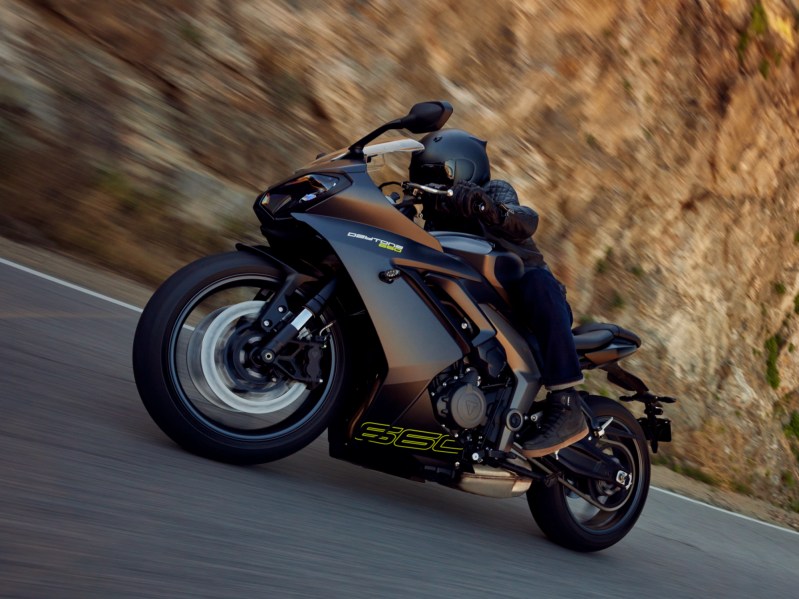
When Triumph Motorcycles introduced the 2024 Triumph Daytona 660 middleweight sports bike, the venerable motorcycle brand adhered to a shared tradition of regeneration and rebirth. Triumph Daytona sports bike models have come and gone since the 1960s, but this latest reincarnation, the 2024 Daytona 660, seems destined for a long run. The Daytona’s gone-again, back-again history makes me wonder if the planned discontinuation of the 2024 Triumph Thruxton Final Edition may herald a new version to follow a short break.
The 2024 Daytona’s liquid-cooled three-cylinder has a broad powerband suitable for carving canyons and riding on city streets. It also has updated technology for handling and rider safety.

Why the Triumph Daytona 660 is important
Like the legendary phoenix, the Triumph motorcycle brand and the Daytona model have risen many times after seemingly reaching their respective ends. On paper, Triumph has been in continuous production since 1902, although company ownership and name have changed several times in 122 years. While Triumph Motorcycles remains a British company, today, it has manufacturing facilities in England and Thailand, plus assembly plants in Brazil and India.
Various Daytona sports bikes over the years have had motors ranging from 500 cc to 1,200 cc. The new Daytona 660 sports bike is firmly in the middleweight class, and its $9,195 starting price is accessible to riders with vast experience and budget ranges. When new riders consider the best kind of motorcycle to buy, large sport bikes are intimidating, while a relatively compact and light 660 cc bike with a four-figure price tag is more approachable.

The power that moves the Daytona 660
The Daytona’s liquid-cooled inline 3-cylinder engine produces 93.6 peak horsepower and 50.9 pound-foot of torque. According to Triumph, 80% of the peak torque is available starting at just 3,150 rpm, which is only a quarter of the high-revving engine’s 12,650 rpm redline. The bike has six gears with a torque-assist clutch that helps with control and stability, especially with hard braking.
The Daytona 660 has Showa front and rear suspension, with upside-down forks in the front with 110 mm of travel and a mono-shock with adjustable preload and 130 mm of travel in the rear. The brakes consist of twin 310 mm disc rotors in front with 4-piston calipers for each and a single 220 mm disc on the back wheel with a single-piston sliding caliper. Both brakes have anti-lock braking systems (ABS) for safer stopping.

Handling, comfort, and accessories
The Daytona has ride-by-wire throttle control with three riding modes: Sport, Road, and Rain. The modes control the relative throttle responsiveness and traction control thresholds. You can turn off traction control via the TFT display, though it’s not advised for anyone other than advanced riders.
The Daytona 660 has a split seat for two-up riding. The rider seat height is just short of 32 inches unladen, meaning the seat will be somewhat lower depending on your weight when you sit on it.
Triumph offers a tempting range of accessories to personalize a Daytona 660. You can spiff up the appearance with a seat cowl or billet-machined parts, warm your hands with heated grips, or make it easier with Triumph Shift Assist. Other options include a USB socket, tire pressure monitoring, bags, security accessories, and the Triumph Connectivity System with phone and music connectivity plus turn-by-turn navigation.
The 2024 Triumph Daytona 660 is available now for order at U.S. dealerships starting at $9,195.




